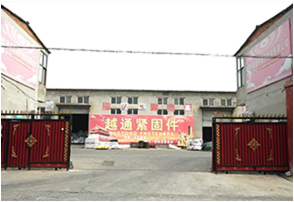Lis . 24, 2024 04:44 Back to list
fastener bolt types
Understanding Fastener Bolt Types A Comprehensive Overview
Fasteners are essential components in various engineering fields, construction, and manufacturing, serving the crucial function of holding materials together. Among these fasteners, bolts stand out due to their versatility and durability. With a variety of bolt types available, each designed for specific applications, understanding these differences is vital for selecting the right one for any project.
1. Hex Bolts
Hex bolts, also known as hex cap screws, are one of the most commonly used types of bolts. Characterized by their hexagonal heads, these bolts often require a wrench or socket for installation. They are typically used in automotive, construction, and structural applications. Hex bolts come in various grades, indicating their strength, with higher grades suitable for more demanding applications.
2. Carriage Bolts
Carriage bolts feature a rounded head and a square shoulder, which helps prevent rotation when tightening. This type of bolt is ideal for wooden structures, as the square neck locks into the wood, ensuring a secure fit. Carriage bolts are commonly used in securing wooden beams or connecting wood to metal.
3. Lag Bolts
Lag bolts, or lag screws, are substantial hex-headed fasteners designed for heavy-duty applications. They are used primarily in wood, providing superior holding power. The threads of lag bolts are coarse, allowing them to be driven directly into the material without the need for a nut. These bolts are commonly found in construction and heavy woodworking projects.
Socket head cap screws feature a cylindrical head with a recessed hexagon socket, allowing for easier tightening in tight spaces. They are often used in machinery and assembly applications due to their high strength-to-weight ratio. The internal drive provides a secure fit, reducing the risk of slippage during tightening.
5. Tension Control Bolts
Typically used in steel construction, tension control bolts are designed for high-strength applications. They come with a unique installation process where a tensioning tool is used to ensure proper tightness. This type of bolt is vital in structural engineering, as it helps prevent joints from becoming loose over time.
fastener bolt types

6. Eye Bolts
Eye bolts are designed with a loop or eye on one end, allowing for the attachment of ropes, chains, or cables. They are commonly used for lifting or securing loads. Eye bolts come in various styles, including screwed and non-screwed, each serving different lifting applications in rigging, marine, and industrial settings.
7. U-Bolts
U-bolts are shaped like the letter U and are primarily used to secure pipe or conduit to a surface. They are widely used in plumbing, automotive, and construction industries. U-bolts come in different sizes and diameters to accommodate various applications, ensuring a secure and stable fit.
8. Flange Bolts
Flange bolts have a built-in flange or washer-like base that helps distribute the load over a larger area, reducing the risk of pull-through. They are commonly used in applications where a nut cannot be used or where space is limited. Flange bolts are often found in automotive and machinery assembly.
9. Shoulder Bolts
Shoulder bolts feature a smooth, cylindrical shoulder that supports rotation while allowing for axial movement. This characteristic makes them ideal for applications involving pulley systems and pivoting mechanisms. Shoulder bolts come in different sizes and materials, suitable for mechanical or structural needs.
Conclusion
When selecting a bolt for a specific application, it is essential to understand the various types available, including their unique features and intended uses. The choice of bolt can significantly affect the durability and safety of a project. Whether for construction, automotive, or machinery purposes, knowing which fastener bolt type to use is crucial for ensuring a secure and reliable assembly.
By understanding these different bolt types, engineers, contractors, and DIY enthusiasts can make informed decisions, ultimately leading to more effective and safer constructions and machinery assemblies.


